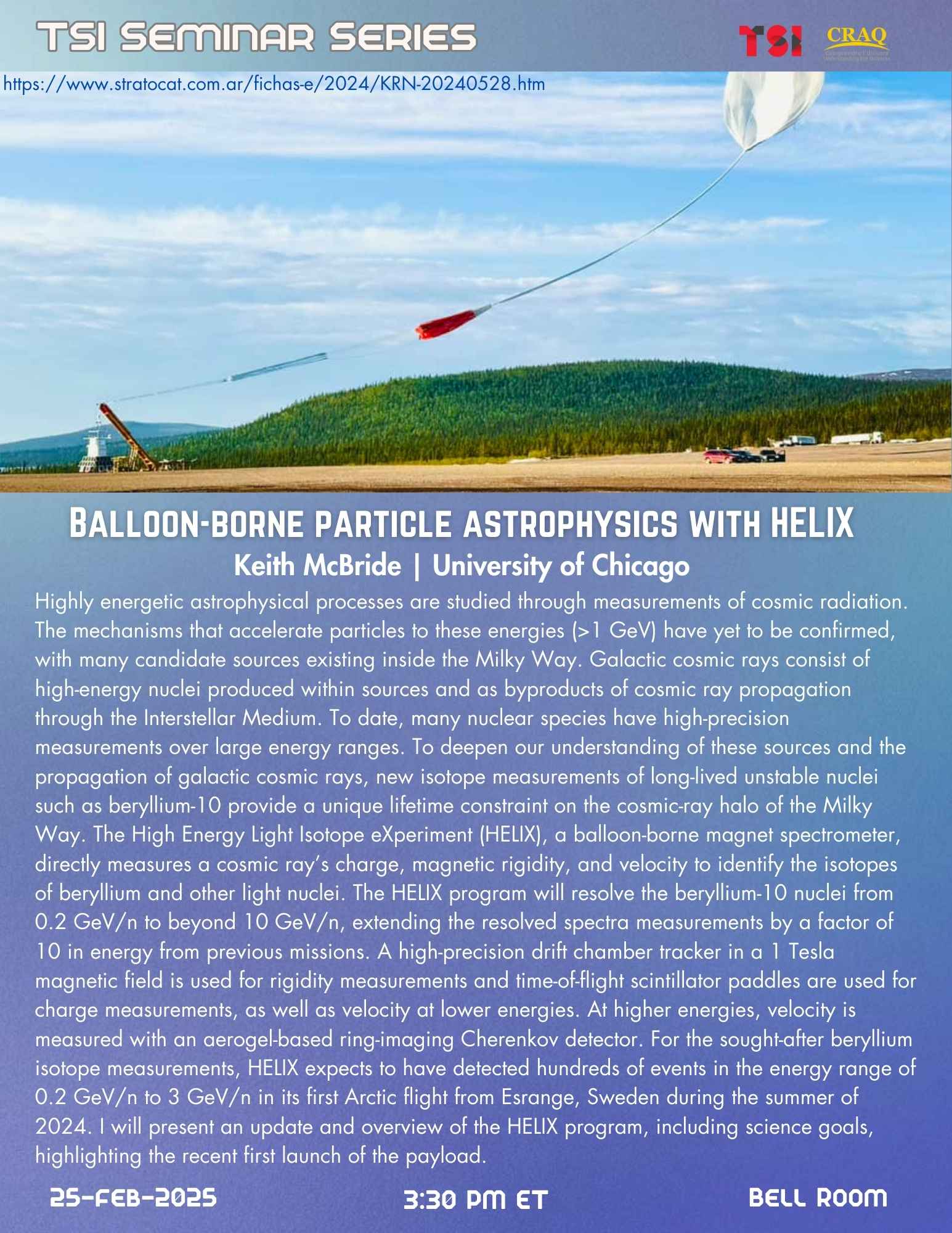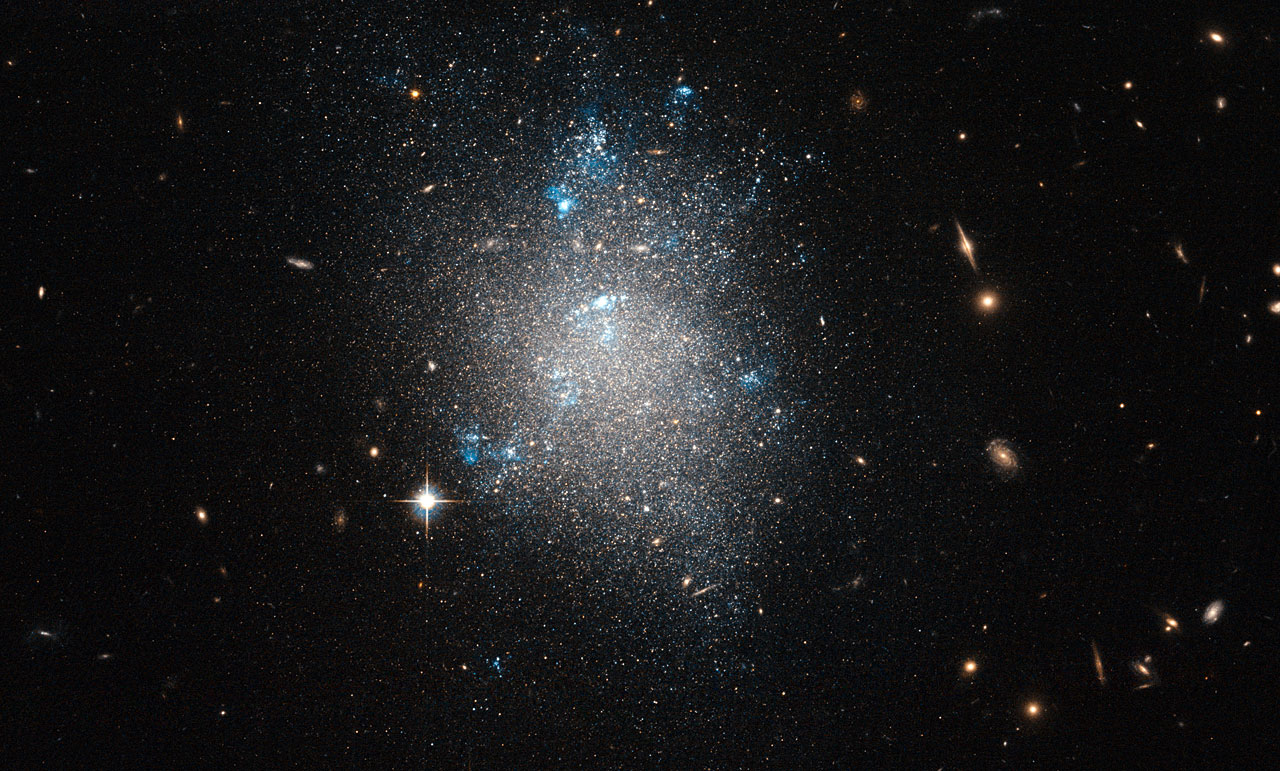Multifaceted Understanding of Accreting Neutron Stars and Their Environments: An X-ray Polarimetric Focus
Mason Ng
(Massachusetts Institute of Technology)
Dec 7, 2023 3:30 PM
Location: TSI Conference Room
Special Seminar
X-ray imaging, timing, and spectroscopy of neutron stars have contributed immensely to our understanding of these dense, compact objects since the dawn of X-ray astronomy. However, many questions remain about the accretion geometry, magnetic field configurations, and particle acceleration mechanisms in accreting neutron stars. X-ray polarization has opened a new window into understanding accreting neutron stars, breaking degeneracies that exist in timing and spectroscopic analyses. The Imaging X-ray Polarimetry Explorer (IXPE), the first X-ray polarization mission in over 40 years, has observed over a dozen accreting neutron stars in its first two years of operations. I will describe some of the results from IXPE observations of accreting neutron stars thus far and discuss implications for our understanding of their accretion geometries. In particular, I will highlight results from one of the first-observed IXPE targets, 4U 1626-67, in which I showed that the observed low polarization levels are consistent with a hybrid accretion geometry, contrary to expectations.




































